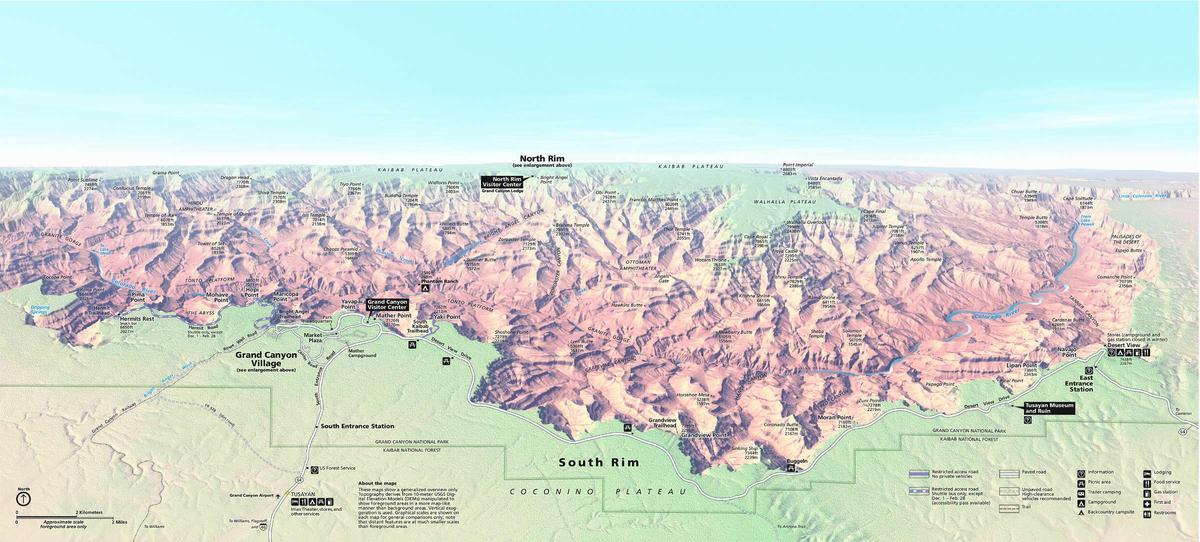Grand Canyon NP--Widforss Trail
Grand Canyon NP--Widforss Trail
North Rim, Arizona 86052
Widforss Trail brochureGrand Canyon National Park website
Grand Canyon National Park maps
Tips for Birding
About this Location
Widforss Trail follows the canyon rim for approximately 2.5 miles then heads into the forest to emerge at Widforss Point—a distance of 5 miles one way (10 miles round trip).
Although shaded for much of the route, the trail can be hot: carry water with you. Take note of the altitude here: at 8,000 feet above sea level, even the most relaxed stroll can be exhausting. Allow approximately two hours for the 5-mile round trip.
The entire 10-mile round trip takes most people 4 to 5 hours. There are no restrooms or drinking water along the trail.
Gunnar Widforss, early twentieth-century artist, lived and painted at the Grand Canyon in the 1930s and produced a large collection of watercolors prized for their geologic detail. In his paintings Widforss captured the Grand Canyon environment as he saw it then. That environment has changed over the years, and natural and human forces continue to reshape the picture—a picture characterized by monumental change through the eons. The geologic features, plant life, and historic features along this trail all provide glimpses of these past and present environments—and future ones as well.
As you walk along the trail you may see wildlife at any time of day or year, including deer, bobcat, mountain lion, wild turkey, squirrel, coyote, porcupine, snakes (gopher and king), and lizards. If you see a large, dark squirrel with tufted ears and a bushy white tail, it is the Kaibab squirrel, native only to the Kaibab Plateau on the north side of the Colorado River.
About Grand Canyon National Park
See all hotspots at Grand Canyon National Park
Grand Canyon is considered one of the finest examples of arid-land erosion in the world. Incised by the Colorado River, the canyon is immense, averaging 4,000 feet deep for its entire 277 miles. It is 6,000 feet deep at its deepest point and 18 miles at its widest. However, the significance of Grand Canyon is not limited to its geology.
The Park contains several major ecosystems. Its great biological diversity can be attributed to the presence of five of the seven life zones and three of the four desert types in North America.
The five life zones represented are the Lower Sonoran, Upper Sonoran, Transition, Canadian, and Hudsonian. This is equivalent to traveling from Mexico to Canada.
The Park also serves as an ecological refuge, with relatively undisturbed remnants of dwindling ecosystems (such as boreal forest and desert riparian communities). It is home to numerous rare, endemic (found only at Grand Canyon), and specially protected (threatened or endangered) plant and animal species.
Over 1,500 plant, 355 bird, 89 mammalian, 47 reptile, 9 amphibian, and 17 fish species are found in the park.
Notable Trails
The Widforss Trail is 10 mi. / 16 km round-trip; 6 hours approximate round-trip hiking time. Blends forest and canyon scenery. Even a short walk can be very satisfying. Take the dirt road 1/4 mile/0.4 km south of Cape Royal Road for 1 mile / 1.6 km to the Widforss Trail parking area. Self-guiding trail brochure is available at the trailhead.
Content from Widforss Trail brochure, Grand Canyon National Park website, and Day Hiking - Grand Canyon National Park
 Grand Canyon Panorama Map
Grand Canyon Panorama Map